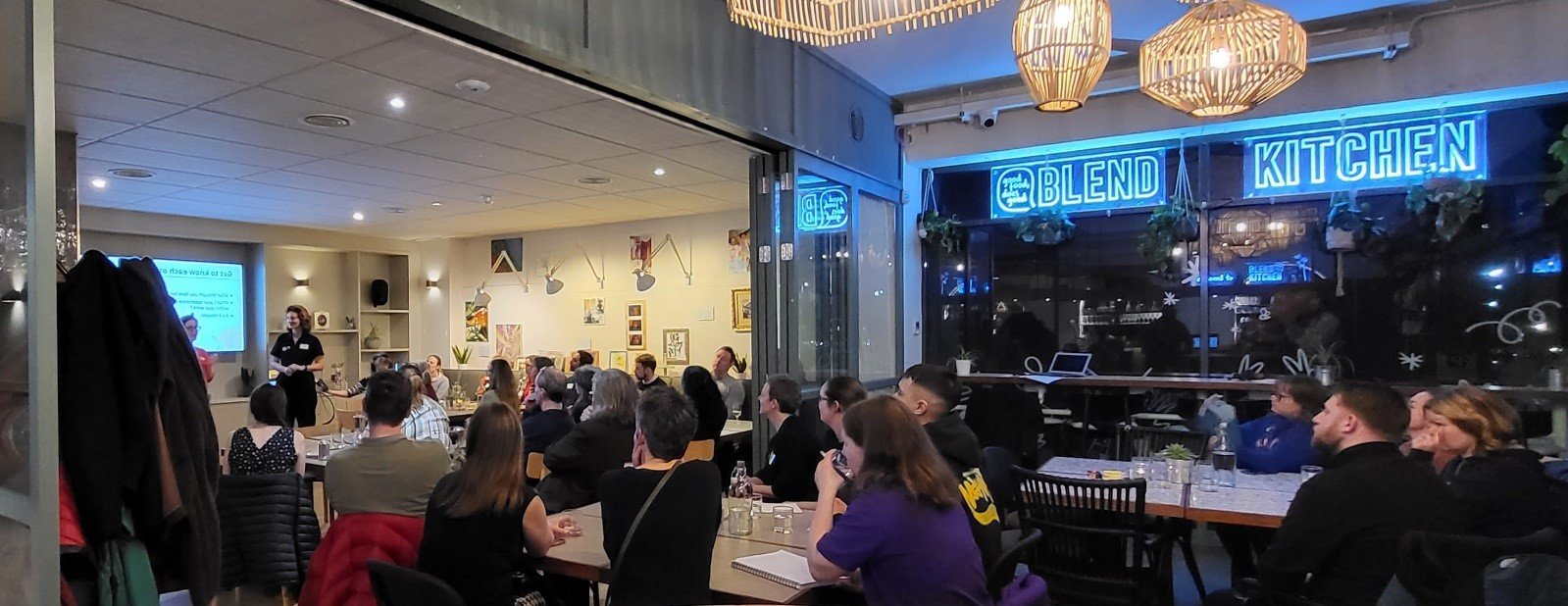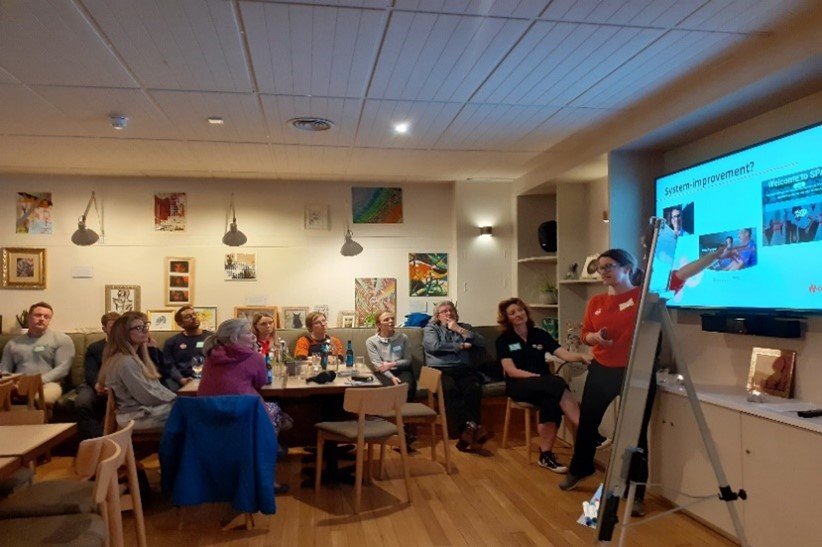On Thursday, 23 March, people working across the healthcare sector, including primary secondary care and voluntary sector gathered at Blend Kitchen on Sheffield’s Ecclesall Road.
Physical inactivity directly accounts for 6% of deaths per year globally, [1,2] and is ranked as the 4th most prevalent risk factor for global morbidity and premature mortality by the World Health Organisation. People who have a physically active lifestyle have a 20-35% lower risk of cardiovascular disease, coronary heart disease and stroke compared to those who have a sedentary lifestyle. Regular physical activity is also associated with a reduced risk of diabetes, obesity, osteoporosis and colon/breast cancer and with improved mental health. In older adults physical activity is associated with increased functional capacities. How this message is presented in consultations and within healthcare teams can be is challenging. And yet, as many at the event testified, it’s a conversation that needs to be had.
After a good bit of chat & networking- but crucially before dinner! Dr Claire Cruikshanks Consultant anaesthetist spoke encouraging everyone to use the Moving Medicine resources and specifically their Active Conversations course. Dr Jo Maher focused on community events in the city and how to move away from discussing physical activity solely as about exercise. Parkrun, local green spaces and the support from social prescribing hubs such as SOAR Community all featured.
Physical Activity post covid?
ONS data suggest activity levels remain down compared to pre-pandemic, but haven’t fallen further, with significant differences reported between different ethnic groups. People who identify as White British are more likely to be physically active (47.7%) than people identifying as Black or Asian, at (35.7%) or (38.7%) (3)
‘Everything closed down. People were told to stay in their houses, so of course people weren’t moving as much,” said local GP Dr Fran Norman. ‘’Habit forming is really important and coming out of the habit of being physically active [means] it’s then really hard to get going again.”
In Yorkshire, the percentage of adults who were physically inactive jumped from 25.6% to 29.2% during the first year of the pandemic. The dip in fitness also affected children, with just 45% getting the recommended amount of exercise of at least one hour a day across England in 2020. (Levels have now returned to what they were pre-pandemic but are still less than half of all children at just 47%.)
While those who could took their daily walk or got on a bike during the Covid lockdowns, the number of journeys people took on foot dropped by 16% this was more than offset by the decrease in utility journeys for including commuting.
An unequal landscape
But whether someone is active or sedentary is determined by much more than just their habits. There are wider structural & social issues at play, as Dr Jo Maher explained. These include access to public transport, safe spaces to walk and the car culture we live in. Unfortunately for many modern lives have exercise and physical activity engineered out of them and with that is a loss of community contact & increased isolation, which itself has negative health effects.
These factors hit people living in poverty hardest. “Unfortunately, we know there’s a very strong link between people who live in more deprived areas of the city and those who don't have the same opportunities to access physical activity as people in the wealthier areas,” Doctor Maher said. “I’m afraid this plays out in the number of years people can expect to live a healthy life, with someone from the North or East of the city developing conditions such as diabetes and heart disease 10-20 years ahead than in the wealthy westside. We also know people from deprived communities are less likely to seek medical help, living with undiagnosed hypertension & diabetes as an example. It’s a bleak picture.
Move Move’s outreach works with projects across the city, including the two football clubs which puts on a range of activities across the city. The Voluntary sector organisations including SOAR community & many more organise Roma dance classes, a fitness club for young men or a Somali disabled women’s group. A wealth of other opportunities are available and Move More is also linked to projects like This Girl Can, Active Through Football and the Dame Kelly Holmes Trust.
Recognising that despite the factors beyond our individual control, there is a community of enthusiasts who want to advocate for the importance of physical activity, as well as sharing what had worked or not worked in their sphere of work left all the attendees asking for further networking events, especially if there is more of the excellent Blend Kitchen curry available!
For More information on Moving Medicine active conversations
https://movingmedicine.ac.uk/activeconversations/
If you would like to get involved with Move More primary care active practice sign up here
https://www.movemoresheffield.com/move-more-active-practice
1 WHO. WHO | Global recommendations on physical activity for health. Geneva: :
World Health Organization 2010.
http://www.who.int/dietphysicalactivity/publications/9789241599979/en/
2 WHO. WHO | Global status report on noncommunicable diseases 2010. Published
Online First: 2010.http://www.who.int/nmh/publications/ncd_report2010/en/





